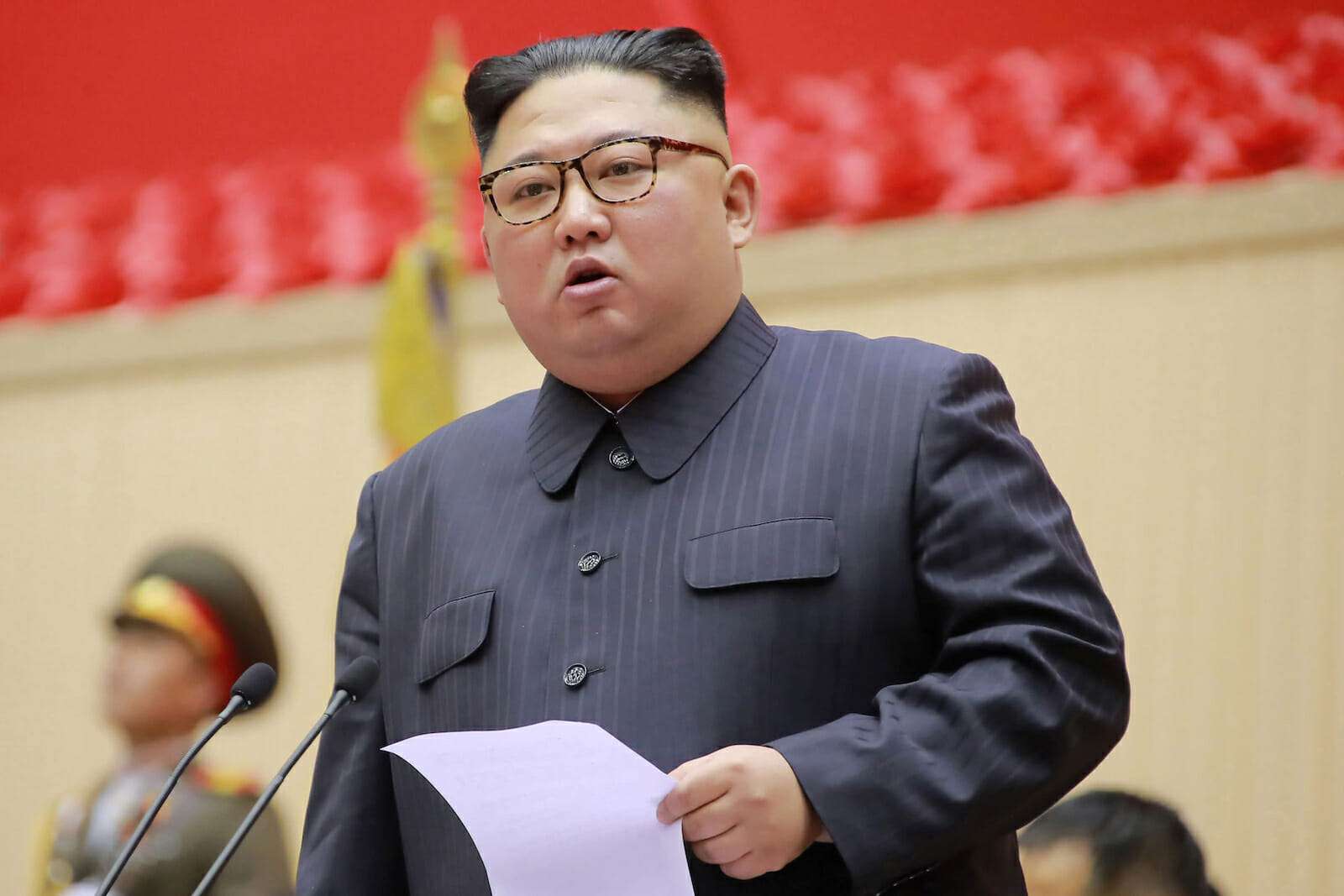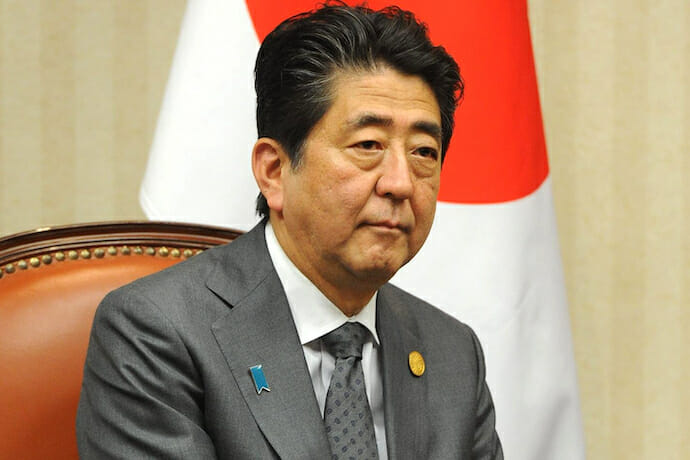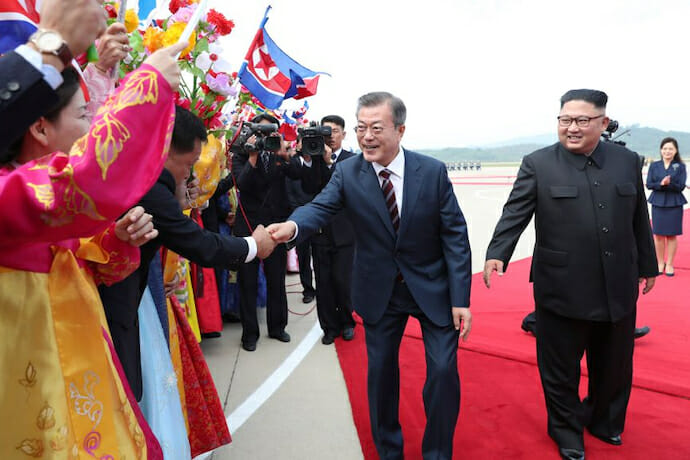Yacqub Ismail and Eleanor Shiori Otsuka Hughes
 In September 27th, Japan’s Ministry of Defense published its annual defense white paper, which reflects Tokyo’s strategic views into the current security environment, developments and challenges to Japan’s geopolitical position and also indicates Tokyo’s strategic priorities. What made the headlines in the press was Japan’s decision to position China as a ‘strategic threat’ to Tokyo ahead of North Korea, which despite the ongoing, but unproductive U.S.-North Korea dialogue to achieve denuclearization continues, Pyongyang still continues to test short-range ballistic missiles that have the potential to threaten Japan’s homeland. But this was not a surprise. While North Korea remains an imminent threat to Japan, it is not a real surprise that Tokyo considers China a threat, due to Beijing’s military modernization, economic development for the last few decades, and the nature of the bilateral Sino-Japanese relationship. This piece will focus on Japan’s outlook in the security environment of Northeast Asia as the Defense White Paper states, with a particular focus on Japan’s relations with North and South Korea, as well as China and Russia.
In September 27th, Japan’s Ministry of Defense published its annual defense white paper, which reflects Tokyo’s strategic views into the current security environment, developments and challenges to Japan’s geopolitical position and also indicates Tokyo’s strategic priorities. What made the headlines in the press was Japan’s decision to position China as a ‘strategic threat’ to Tokyo ahead of North Korea, which despite the ongoing, but unproductive U.S.-North Korea dialogue to achieve denuclearization continues, Pyongyang still continues to test short-range ballistic missiles that have the potential to threaten Japan’s homeland. But this was not a surprise. While North Korea remains an imminent threat to Japan, it is not a real surprise that Tokyo considers China a threat, due to Beijing’s military modernization, economic development for the last few decades, and the nature of the bilateral Sino-Japanese relationship. This piece will focus on Japan’s outlook in the security environment of Northeast Asia as the Defense White Paper states, with a particular focus on Japan’s relations with North and South Korea, as well as China and Russia.
North Korea
Consistent with previous defense papers, it is no surprise that North Korea’s military posture remains a great threat to Japanese national security. This is largely because within the past few years, North Korea has successfully tested missiles, capable of hitting the Japanese territory. For example, on August 29th, 2017 and September 15th, 2017, North Korea successfully launched Hwasong-12, an Intermediate-Range Ballistic Missiles (IRBMs), which flew over Hokkaido, Japan’s northernmost island, which deeply alarmed both the Japanese government and its citizens. In response to this, just a few short days later at the 72nd UN General Assembly, Prime Minister Shinzo Abe’s sobering remarks addressed this very matter. “Over the course of more than a decade beginning in 1994, the international community continued its efforts towards dialogue with North Korea with great perseverance, first through the Agreed Framework, and later through the Six-Party Talks…For North Korea, dialogue was instead the best means of deceiving us and buying time,” he stated.
Shortly thereafter, Abe wrote an op-ed in the New York Times, making a clear argument that the unyielding North Korea tirelessly pursues nuclear proliferation even when multilateral dialogue such as the Six-Party Talks seems to bring promising results towards international peace and security. Once again, Abe urged his allies and the United Nations to stop playing these games of make-believe, which is that North Korea is capable of dismantling its nuclear weapons program. Instead, it behooves them all to enforce a maximum-pressure campaign to squeeze North Korea of all of its financial and technological assets that have prolonged its missile program.
North Korea’s long-term objective of becoming a nuclear state has not changed in recent times, and unlike the United States and South Korea, Abe has been unable to secure a summit with Kim Jong-un. That being said, despite the recent missile that landed in Japan’s Economic Exclusion Zone (EEZ) on October 2nd, Abe has expressed his willingness to meet with the leader of the Hermit Kingdom during his remarks at the opening of the Japanese Diet session, because one of his primary administrative priorities is to resolve the abduction issue from the late 1970s-early 1980s.
Balazs Szalontai, an associate professor of North Korean Studies at Korea University’s Sejong Campus, denotes that “as is common in Japanese defense papers, there are very extensive overlaps between the three successive papers as far as North Korea is concerned, with entire paragraphs repeated almost verbatim.” Additionally, he attributes the repetition of the section regarding North Korea to “a technological update than a conceptual reassessment.” Furthermore, “the brief coverage of the recent relaxation of tension probably reflects the Ministry’s skepticism about the prospects of denuclearization talks and its concerns about the post-2018 inter-Korean and Sino-DPRK rapprochement that threatens to isolate Japan.” In short, regardless of whether Japan remains sidelined in diplomatic dialogue with North Korea or not, the template for the North Korean section of future defense white papers will most likely have nominal changes—North Korea’s position in terms of Japan’s threat priorities to its national security will remain unchanged (a top priority).

Japan’s Shinzo Abe. (RIA Novosti)
South Korea
Between 2014-2016, there were signs of a rapprochement between Japan and South Korea with the signing of a Trilateral Sharing Arrangement between Japan, South Korea, and the U.S. with regard to security concerns encircling the DPRK’s growing nuclear arsenal. In addition, Japan and South Korea made a joint-agreement regarding the comfort women issue and implemented a long-awaited bilateral intelligence-sharing pact known as the General Security of Military Information Agreement (GSOMIA) in November 2016. That being said, even with these agreements, historical grievances remains an open wound for the South Korea & tensions became much more palpable in 2018, negatively affecting their military cooperation.
For example, the 2019 paper indicated that in October 2018 during the international fleet review, South Korea mandated a rule, prohibiting the Japanese Maritime Self-Defense Forces (MSDF) from hoisting their flag, which was Imperial Japan’s official flag until the end of the Great War. Expressing indignation, the paper states that this rule “cannot be accepted under Japanese law” and Tokyo submitted requests to have Seoul reconsider. Receiving unfavorable responses from Seoul goaded Tokyo enough to pull out of the international fleet review. Tokyo would rather not participate in maritime exercises than capitulate to Seoul’s demand of not using their MSDF flag.
Additionally, the report also conveyed dissatisfaction regarding Seoul’s unilateral decision to discontinue GSOMIA in August. In it, the former Japanese Minister of Defense Takeshi Iwaya indicated that he “can’t help but feel disappointed, and it is extremely regrettable.” Given Japan’s and South Korea’s geographical proximity from North Korea and their recent missile tests, Tokyo “urges the [South Korea] side to wisely respond to secure appropriate cooperation between Japan and [South Korea].” Similarly, as per this headline from Yonhap News Agency, high-ranking U.S. officials have even called on Seoul to renew GSOMIA before its expiration in November.
In comparing both South Korea & Japan’s defense white papers from 2018 and 2019, the language and structure of the reports suggest heightened tensions. Unlike their 2017 defense paper, South Korea’s 2018 defense white paper, published in January, no longer lists the DPRK as their primary threat to their national security, which would undoubtedly concern Tokyo. That being said, Seoul recognizes that the DPRK’s nuclear stockpiling continues to pose a grave threat to the geostrategic security balance of East Asia. In 2017, Tokyo introduced the section concerning its bilateral relations with Seoul by stating how “it is important for [Japan and South Korea] to advance their relations in future-oriented manner” This language may suggest promising military cooperation between Seoul and Tokyo, but this year’s report does not utilize this wording. Moreover, South Korea’s ranking in the report’s “Security Cooperation” section decreased from second in 2018, to fourth in 2019, placing it after Australia, India, and the ASEAN nations. This ranking is not only telling, but it undoubtedly outlines Japan’s eroding defense cooperation with South Korea.
A pivotal question remains in evaluating Tokyo’s military cooperation with Seoul: Will their shared military concerns over North Korea’s ever-expanding military capabilities become subordinated to unresolved wartime, territorial, and economic disputes? At this point in time, it remains to be seen, but for now, many remain dubious of the prospects of tensions easing in the near future.

South Korea’s Moon Jae-in and Kim Jong-Un in 2018. (Pyongyang Press Corps)
China
As the Sino-Japanese relations are not always cooperative and does include some competitive elements, the paper started expressing Japan’s own concerns regarding China’s military developments and the lack of transparency regarding the capabilities that Beijing has developed and its intentions, including China’s “civil-military fusion,” its expanding capabilities in cyberspace, and its outer space capabilities, which in Tokyo’s defense white paper’s words would bolster “China’s Anti-Access/Area Denial capability and lead to the establishment of operational capabilities further afield.” While the Japanese paper expressed concerns regarding the transparency of China’s military modernization, which have not yet achieved “the levels of transparency expected of a responsible nation in the international community,” but the paper has not further expressed the areas that the recent Chinese white papers missed to mention, although the paper did rightly encouraged more attention to be paid on China’s party-PLA relations and the military’s role in the foreign policymaking of China. Since Xi Jinping came into power, and his efforts to reorganize and reform the military, it is widely believed that Xi has consolidated his power over the military, but with the pace of the military reforms, the Japanese Defense White Paper encourages more attention to be paid on the “outcomes of the military reforms” as well as any disaffected voices within the military bureaucracy.
These developments in the operational capabilities has the potential to cause security concerns in Tokyo, as the disputes on the Senkaku/Diaoyu islands between China and Japan are still unresolved. On this dispute, where General Koji Yamazaki of the Self-Defense Forces described it as the “most immediate threat” that faces Japan, China’s intensified surveillance activities in the territorial waters for the last decade was in order to “change the status quo,” where Japan administers the islands and “escalate the situation” was described by the paper as “totally unacceptable.” Both the Obama and Trump administrations in the U.S. made clear in the last couple of years that the U.S.-Japan security alliance does cover the islands’ security as Tokyo administers the islands, which while offering reassurances to Japan would expand a Sino-Japanese dispute to a great power conflict if escalated.
Regarding China’s Belt and Road Initiative, where Chinese authorities are heavily investing in strategic infrastructure in countries around Asia, Africa, Europe and Latin America, the Japanese Ministry of Defense’s annual White Paper linked the infrastructure investments that Beijing is offering through the Belt and Road Initiative to China’s People’s Liberation Army Navy’s future operational capabilities in both the Pacific and Indian oceans. In both Pakistan and Sri Lanka, who are signatories to the Belt and Road Initiative and have been receiving Chinese investments, the Chinese navy has made several port calls since then as the paper documented.
Russia
Another important actor in the Northeast Asian security environment that Japan’s annual Defense White Paper paid attention to is Russia. Russia has been activating its presence in the Asia-Pacific (Indo-Pacific) region for quite a while now, in particular since the annexation of Crimea by Russian forces in February 2014, by developing a close and multidimensional partnership with China, Moscow has also been increasing its diplomatic engagement with Japan, India, and ASEAN countries, although the region did not draw the same attention of Russian policymakers that Europe, Central Asia or even the Middle East did in the last decades, due to both the limited resources at their disposal, but also the relative strategic interests that the Kremlin had. In the White Paper, Japan’s Ministry of Defense argued that “Russia recognizes that the significance of the Asia-Pacific region is increasing within its multi-pronged foreign policy, and considers it strategically important to strengthen its status in the region from the viewpoint of socioeconomic development in Siberia and the Far East, and security,” and in order to achieve that, strengthening bilateral ties with Beijing is the ‘key’ to achieving this aim.
Prime Minister Shinzo Abe was recently a frequent visitor to Russia in order to discuss bilateral ties between the two neighbours and has been successful to an extent to develop a personal and working-level relationship with President Vladimir Putin. The paper states that Russia “states that it will develop mutually beneficial cooperation” and deepen its engagement with Tokyo on “many fields, including politics, economics, and security.” Although U.S. sanctions against Russia following Moscow’s annexation of Crimea had hindered the potential of a strong Russo-Japanese trading partnership, the two countries had made gradual progress in bilateral trade, which grew by nearly 20% in last year alone.
However, a major difficulty that hindered the potential of the two countries’ bilateral ties is the future of the Northern Territories (known as the Southern Kurils in Russia), which has fallen under Russian sovereignty by the end of World War II but is still claimed by Tokyo. The Russian Navy’s Pacific Fleet has proceeded with developing new military facilities in the area, and the deployment of new weapons systems, like anti-ship missiles (Bastion missile system and Bal system in particular) that were deployed in Etorofu and Kunashiri islands in 2016 and a new airfield that was opened up for joint military and civilian use in early 2018 as the White Paper raised concerns around those military activities, but were already protested by top Japanese officials.
The dispute over the islands has been a major obstacle to the prospect of signing a peace treaty between Japan and Russia following World War II, and despite Abe’s earlier optimistic assessment into the prospect of ending the longstanding dispute, and has already spent political capital on finding a solution with the Kremlin, there has been no positive development on this front to report on. As part of Abe’s playbook with Russia, Japan is expecting to continue engaging with Russian officials settle the territorial dispute, by “using economic instruments to create favourable conditions for achieving political goals,” as Maria Shagina from the University of Zurich noted.
Although it is not mentioned in Japan’s own strategic documents, once the territorial question is resolved, some in Tokyo expect that the improving Russo-Japanese ties may serve for Tokyo as an effective balance against a rising China, although this assessment misses Russia’s perception of itself, but also of the role that Japan could play for the future. As Chris Miller from the Fletcher School of Diplomacy observed before, while some Russian officials may understand the logic behind this long-term goal, the Kremlin’s top foreign policy officials currently do not “see an immediate need to improve ties with Japan,” and for that reason, there is “little reason to expect substantive Russian concessions” that are designed to improve the bilateral agenda of the two countries. Japan is seen as a close ally of the U.S., and as long as the U.S.-Russia relations are in a bad mood, the likelihood of this goal being achieved is low.
On the other hand, as Dmitri Trenin from the Carnegie Moscow Center argued before, while improving ties with Tokyo is ‘certainly desirable’ for the Kremlin, this assessment misses how Moscow views itself in Northeast Asia. Cooperating with China and avoiding a confrontation with Beijing is in the words of Trenin ‘a must’ as the two countries share a long border, but a more realistic way to improve the strategic relationship between Tokyo and Moscow could involve improving the economic ties to a level that makes Japan a ‘valuable economic partner’ to Russia, which would induce the Kremlin to take into account Japan’s own interests, and balance its ties with both China and Japan. After all, Trenin uses Russia’s engagement in the Middle East and South Asia as good examples of how Russia could potentially create a strategic equilibrium between the two.
Conclusion
In the current regional security environment in the Northeast Asia region, Japan faces two major threats that could have a huge impact not only on Tokyo’s security, but also on the balance of power and the stability of the region: In the short term, North Korea’s nuclear weapons and missile program is a huge danger to Japan’s own security and the lack of progress in the ongoing U.S.-North Korea talks is not helping Tokyo’s own security, as it has not yet succeeded in securing high-level talks with Pyongyang (Abe has announced his intention, but nothing major has followed), but in the long term, a Sino-Russian strategic partnership that reaches the level of an alliance would be a dire threat to Japan’s strategic outlook, and in order to prevent that, Tokyo may continue to try to improve ties with Moscow, but that would not go forward as the territorial dispute over the Kuril islands/Northern territory will hinder any prospect for a Russo-Japanese strategic rapprochement.
No comments:
Post a Comment